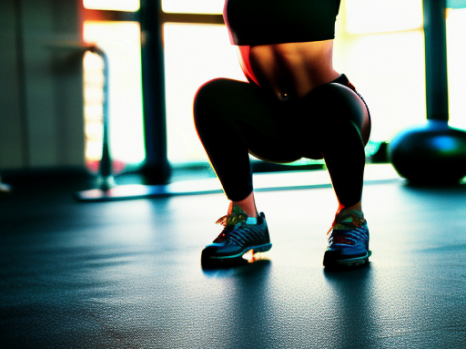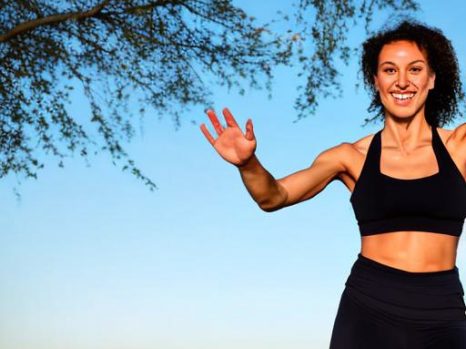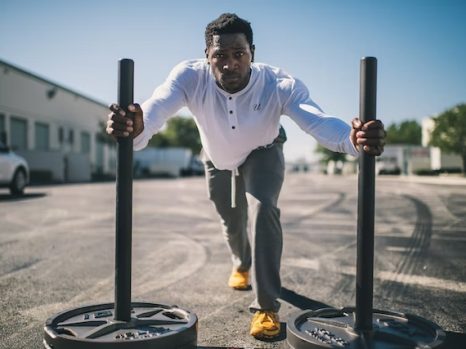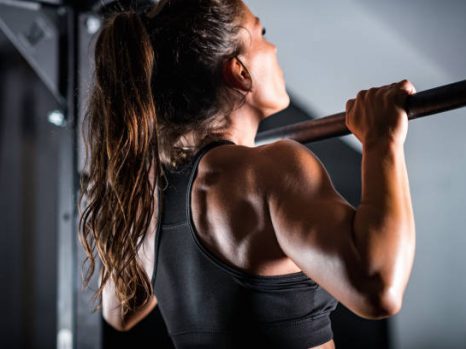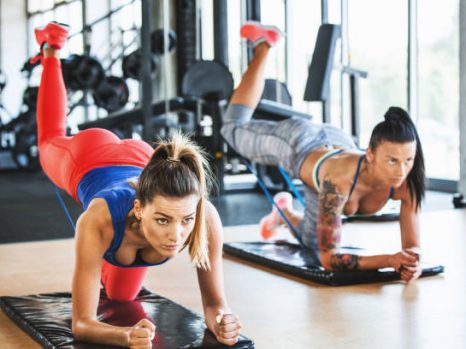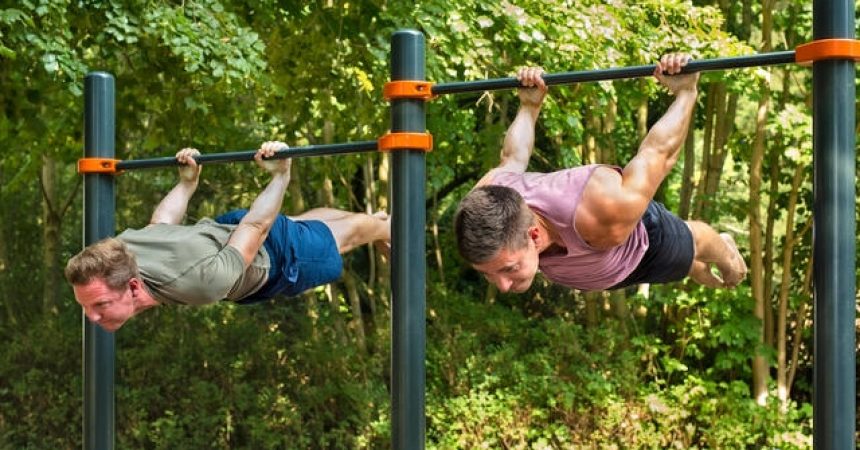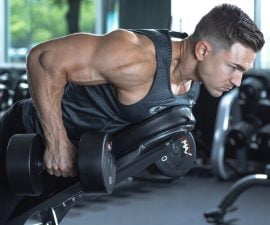The back lever is a great exercise for building strength and developing muscular endurance. It’s a simple movement that can be performed with little equipment and is perfect for beginners.
The back lever works all of the major muscles in the back, including the latissimus dorsi, trapezius, and erector spinae. These muscles are responsible for pulling and supporting the weight of the body. This exercise also works the muscles of the arms and shoulders, including the biceps, triceps, and deltoids.
If you’re new to gymnastics, just looking to improve your back lever or looking for a new challenge, this exercise is for you! We’ll cover back lever progressions, tips, and tricks to help you get the most out of this challenging but rewarding exercise.
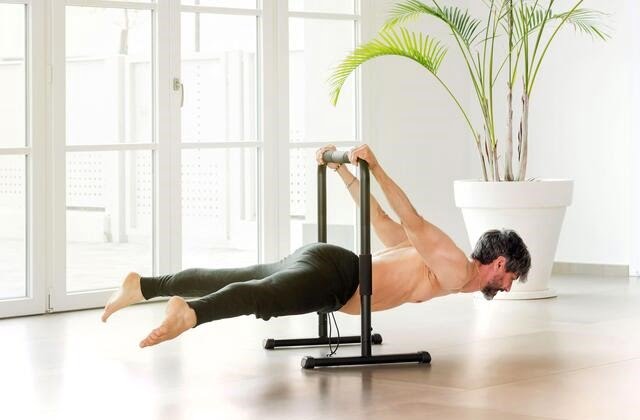
The benefits of back lever exercises
While this may look like a simple move, it’s actually quite difficult to master. However, the benefits of this exercise are well worth the effort. Here are some of the benefits of back lever exercises:
- Builds Strength
One of the main benefits of this exercise is that it’s an excellent exercise for building strength. In order to perform the move, you must engage your entire body, which means that all of your muscles must work together. This full-body engagement is what makes the back lever such an effective strength-building exercise.
- Develops Muscular Endurance
In addition to building strength, this exercise can also help to develop muscular endurance. This is because the move requires you to maintain a static position for an extended period of time. This static position puts a great deal of strain on your muscles, which forces them to adapt and become more resistant to fatigue.
- Improves Coordination
The back lever is also a great exercise for improving coordination. This is because the move requires you to maintain a balance between your upper and lower body. This balance challenge can help to improve your coordination and proprioception (body awareness).
- Increases Flexibility
This move can also help to increase your flexibility. This is because the move requires you to stretch your body in a number of different directions. This stretching can help to improve your overall flexibility and range of motion.
- Great for Core Training
Another benefit of this move is that it’s an excellent exercise for training your core muscles. This is because the move requires you to keep your body in a tight, strong position. This position engages your core muscles and helps to build them up.
If you’re looking to build strength, develop muscular endurance, improve coordination, or increase flexibility, then this exercise is definitely for you. Give it a try and see for yourself!
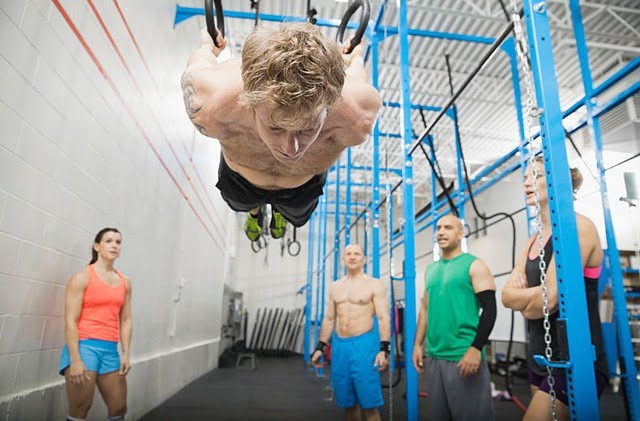
How to warm up for the back lever
The back lever is an impressive straddle hold that requires strength, coordination, and balance. It’s a move that looks awesome when performed correctly and makes for a great show of strength. Most people think this exercise is an advanced move and should only be attempted by those who have mastered other, simpler straddle hold positions. However, this isn’t necessarily true.
In fact, this move can be broken down into smaller, more manageable steps that will allow even those who are new to the move to eventually achieve the full back lever.
This is a move that should be worked up to slowly and carefully. Warming up helps prepare your body for the strenuous activity to come, and it can help prevent injuries. If you try to go for it too soon, you will likely just end up straining your muscles with little to show for it. Here’s a step-by-step guide to help you warm up for the back lever and eventually achieve the move
Seated shoulder dislocates – 15 reps
The first step is to prepare your shoulders for the back lever. Seated shoulder dislocates are a great way to do this. Sit on the ground with your legs out in front of you and your arms by your sides. From here, raise your arms up over your head and then back behind your head as far as you can. Do this 15 times to warm up your shoulders.
German hang lowers – 5 reps
The next step is to work on your lower back and lats. German hang lowers are a great way to do this. To set up, grab a pull-up bar with an overhand grip and hangs from the bar. From here, slowly lower your body until your chin is level with the bar. Then, raise your body back up to the starting position. Do this 5 times to warm up your lower back and lats.
German hang holds – 30 secs
The final step is to work on your grip strength. German hang holds are a great way to do this. To set up, grab a pull-up bar with an overhand grip and hangs from the bar. From here, hold yourself in the lowered position for 30 seconds. This will help you build grip strength and prepare your body for the back lever.
After you’ve completed the above steps, you should be warmed up and ready to attempt the back lever. Remember to take things slowly and focus on your form. With practice, you’ll be able to achieve the full back lever position.
How to do a back lever exercise
Bodyweight back lever training is a great way to build strength and control in your upper body and core. The back lever is an advanced move, so if you’re just starting out, you may want to focus on mastering other basic bodyweight moves first, such as the pull-up, dip, and push-up. Once you’ve got those down, you can start working on your back lever.
Here’s a step-by-step guide to doing a back lever:
Body tension & cues
The first thing you need to do is to create tension in your body. To do this, you’ll need to:
- Scapula protraction
To protract your scapula, squeeze your shoulder blades together. This will help to engage your back muscles.
- Squeeze hands towards glutes
This cue will help to engage your lats.
- Glute and abdominal engagement
To engage your glutes and abs, simply squeeze them tight. This will help to stabilize your body during the move.
- Lean forward
The final cue is to lean your body forward. This will help to keep your body in alignment and prevent you from swinging during the move.
Sets and hold durations
Once you have the body tension cues down, you can start working on your sets and hold durations. For back lever training, you’ll want to do:
- Back lever holds – 3 – 5 sets x 8-12 secs
Start by doing 3-5 sets of back lever hold for 8-12 seconds each. If you can hold for longer, great! But don’t try to force it. Just work within your own abilities and build up from there.
- Back lever lifts – 3 sets x 3-4 reps
Once you’ve got the hold down, you can start working on your lifts. For this, you’ll want to do 3 sets of 3-4 reps. Again, if you can do more, great! But don’t try to force it. Just work within your abilities and build up as you get stronger.
And that’s it! Just keep practicing and following these cues and you’ll be nailing this back buster in no time.
Back lever progression
If you can’t yet do a full back lever, there are several progressions you can try. One option is to start by doing a partial back lever. This means only lifting your legs and torso partway off the ground. As you get stronger, you can slowly increase the range of motion until you’re able to do a full back lever.
Another option is to practice the exercise with your feet on a support. This could be a chair, couch, or even another person’s shoulders. As you get stronger, you can slowly remove the support until you’re doing the exercise with your feet off the ground. Finally, you can also practice the exercise with one leg at a time. This will help you build up the strength and coordination needed to do a full back lever.
Some other advanced back lever progressions are: Tuck Back Lever, One Leg advanced Back lever, Straddle Back Lever, and finally the Full Back Lever and all can be seen in the video below.
Tips for doing a back lever exercise
Here are a few final tips to help you master this exercise:
– Practice regularly.
The more you practice, the easier the exercise will become.
–Focus on quality over quantity.
It’s better to do a few perfect reps than to try to do too many and sacrifice form.
– Breathe evenly.
Taking deep, even breaths will help you maintain tension and focus throughout the exercise.
With these tips, you should be well on your way to mastering the back lever exercise. Just remember to practice regularly and focus on quality over quantity, and you’ll be able to achieve your fitness goals in no time!
Back lever vs Front lever
There are many different types of lever exercises that you can perform in order to work your muscles. Two of the most popular exercises are the back lever and the front lever. Both of these exercises target different muscle groups, so it is important to know which one is right for you.
The back lever is a great exercise for working your back muscles. To perform this exercise, you will need to hold yourself up on two support points, such as a bar or two chairs. Then, place your feet on another support point and raise your body up so that your back is parallel to the ground. From here, you can lower yourself back down to the starting position.
The front lever is a great exercise for working your abdominal muscles. To perform this exercise, you will need to hold yourself up on two support points, such as a bar or two chairs. Then, place your feet on another support point and raise your body up so that your front is parallel to the ground. From here, you can lower yourself back down to the starting position.
So, which exercise is right for you? If you are looking to work your back muscles, then the back lever is the exercise for you. If you are looking to work your abdominal muscles, then the front lever is the exercise for you.
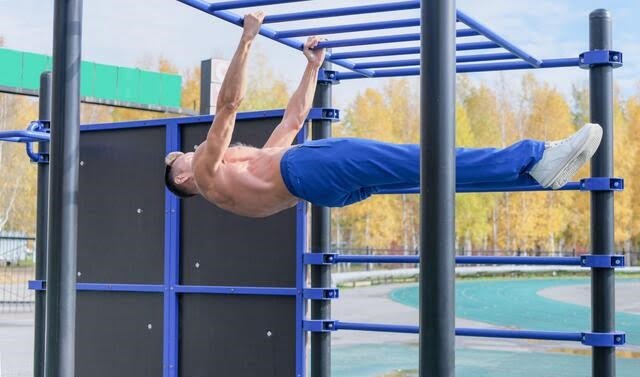
Differences between front and back lever.
Back Lever
– Primarily works your back muscles
– More difficult to master
– Often recommended to start with the front lever first
Front Lever
– Primarily works your abdominal muscles
– Easier to master
– Great exercise for beginners
Final thoughts
In conclusion, the back lever is an excellent exercise for developing strength and muscular endurance. It is perfect for beginners and can be performed with little equipment. This exercise works all of the major muscles in the back, including the latissimus dorsi, trapezius, and erector spinae. These muscles are responsible for pulling and supporting the weight of the body. This back buster also works the muscles of the arms and shoulders, including the biceps, triceps, and deltoids. With proper progressions and technique, the back lever can be a great addition to any strength-training program.
FAQs
What muscles does Back Lever Work?
The trapezius, latissimus dorsi, and erector spinae muscles work together to maintain the position of the body during this exercise. The deltoids, biceps, and triceps work to stabilize the body and keep it from swinging. Check out more Back lever variations.
Will back lever exercise build muscle?
This exercise is an excellent exercise for building back muscle and strength. However, it is important to note that this exercise will only build muscle if it is performed correctly and with proper form. Additionally, back lever exercises should be performed in a controlled and slow manner in order to ensure that the muscles are worked properly.
Is a back lever impressive?
This exercise is a gymnastics move that requires a lot of strength and coordination and is considered to be one of the most impressive gymnastics moves.



